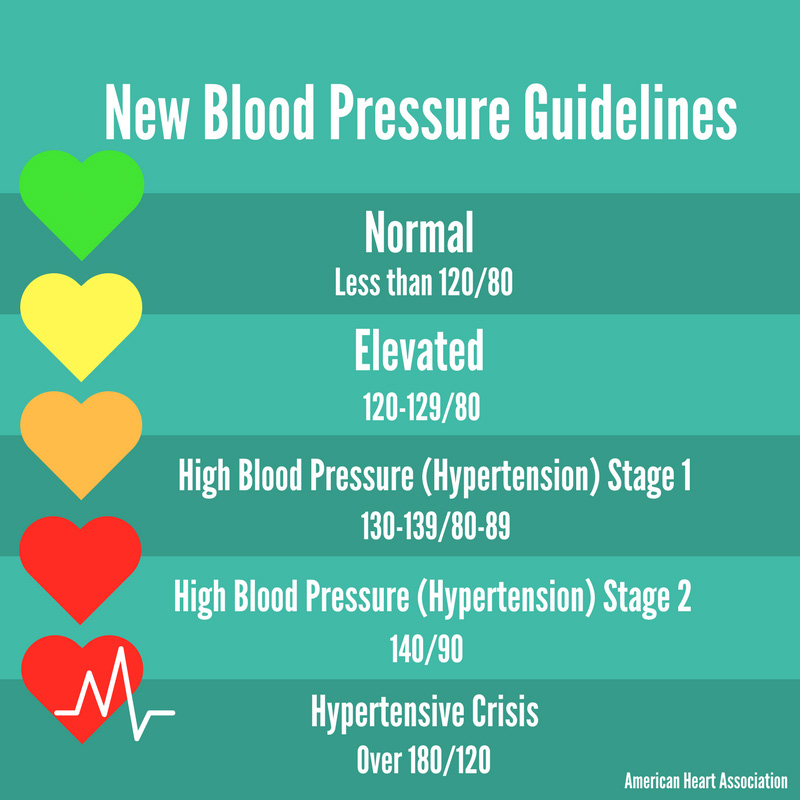What the New High Blood Pressure Guidelines Mean
Posted in

It might be time to get your blood pressure checked. The American Heart Association (AHA) and The American College of Cardiology (ACC) recently issued new guidelines for identifying high blood pressure. This means patients who had previously fallen into a healthy blood pressure range may not be under the new guidelines. However, it's important to note the American Academy of Family Physicians (AAFP) has declined to endorse the new ACC/AHA guidelines and continues to endorse the 2014 Evidence-Based Guideline for the Management of High Blood Pressure in Adults. For more information, please visit the AAFP website for its statement.
Heart health in Oklahoma
A 2016 study conducted by the Oklahoma State Department of Health revealed heart disease was the leading cause of death in Oklahoma, with one in every four deaths due to heart disease. The study also showed that nearly two out of every five Oklahoma adults were diagnosed with high blood pressure. Similarly, the United Health Foundation recently released its America’s Health Rankings® Annual Report. The report, which featured 2017 data, ranked Oklahoma 48th in the nation for cardiovascular deaths, which are up four percent from 2016.
High blood pressure is a huge risk factor for heart and other cardiovascular diseases. Blood pressure is the rate or force of blood pushing against blood vessel walls. High blood pressure, or hypertension, is dangerous because it causes the heart and body to work harder to pump blood. This hardens arteries over time.
Many factors can cause high blood pressure. Some factors, like genetics and family history, can’t always be controlled. Other contributing factors, like smoking and lack of exercise, can be controlled through lifestyle changes.
It’s vital to your overall health that you monitor your blood pressure through annual or regular checkups with your primary care doctor. If you are at a high risk of developing high blood pressure, it’s especially important to begin regular monitoring.
How is blood pressure measured?
Blood pressure is measured by two numbers, the systolic number and the diastolic number. The systolic number is calculated by measuring how the heart beats and pushes blood through blood vessels. The diastolic number measures the artery pressure when the heart is at rest in between beats.
The new AHA/ACC guidelines
There are several levels of blood pressure under the new guidelines.
- “Normal,” or less than 120/80
- “Elevated,” or 120-129/<80
- “High Blood Pressure (Hypertension) Stage 1,” or 130-139/80-89
- “High Blood Pressure (Hypertension) Stage 2,” or ≥140/≥90
- “Hypertensive Crisis,” or >180/>120.
The previous guidelines had a prehypertension level that is no longer in use. Other changes include the recommended use of at-home blood pressure monitoring devices and the consideration of stress factors in a patient’s care plan.
Why did the guidelines change?
Some in the medical community has realized that earlier life changes and treatment are the best ways to approach high blood pressure. By treating patients who are in the 130/80 range earlier rather than waiting until they approach 140/90 range, doctors can recommend better preventive lifestyle practices for their patients. However, it's important to note the American Academy of Family Physicians (AAFP) has declined to endorse the new ACC/AHA guidelines and continues to endorse the 2014 Evidence-Based Guideline for the Management of High Blood Pressure in Adults. For more information, please visit the AAFP website for its statement.
What can I do to lower my blood pressure?
Lifestyle changes can help lower or maintain your blood pressure. Quitting smoking, eating a healthy and well-balanced diet, and using relaxation techniques can also help decrease blood pressure. Your cardiologist may also prescribe medication that can help lower blood pressure as well.
INTEGRIS and heart health
The INTEGRIS Heart Hospital, located in Oklahoma City’s INTEGRIS Baptist Medical Center, provides advanced and comprehensive heart care. If you’re at an increased risk of high blood pressure or heart disease, take part in preventive care by receiving regular checkups, meeting with a heart specialist or participating in a HeartScan screening.

